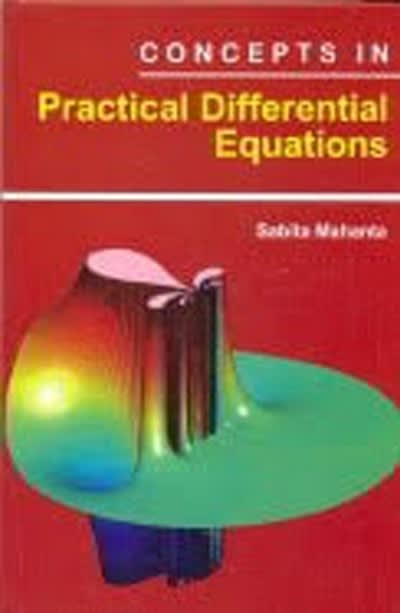Question
(a) Fred visits Blotchville again. He finds that the city has installed an electronic display at the bus stop, showing the time when the previous
(a) Fred visits Blotchville again. He finds that the city has installed an electronic display
at the bus stop, showing the time when the previous bus arrived. The times between
arrivals of buses are still independent Exponentials with mean 10 minutes. Fred waits
for the next bus, and then records the time between that bus and the previous bus. On
average, what length of time between buses does he see?
(b) Fred then visits Blunderville, where the times between buses are also 10 minutes on
average, and independent. Yet to his dismay, he finds that on average he has to wait more
than 1 hour for the next bus when he arrives at the bus stop! How is it possible that the
average Fred-to-bus time is greater than the average bus-to-bus time even though Fred
arrives at some time between two bus arrivals? Explain this intuitively, and construct a
specific discrete distribution for the times between buses showing that this is possible.
43. Fred and Gretchen are waiting at a bus stop in Blotchville. Two bus routes, Route 1
and Route 2, have buses that stop at this bus stop. For Route i, buses arrive according
to a Poisson process with rate
A fair die is rolled, and then a coin with probability p of Heads is flipped as many times
as the die roll says, e.g., if the result of the die roll is a 3, then the coin is flipped 3
times. Let X be the result of the die roll and Y be the number of times the coin lands
Heads.
(a) Find the joint PMF of X and Y . Are they independent?
(b) Find the marginal PMFs of X and Y .
(c) Find the conditional PMFs of Y given X = x and of Y given X = x.
6. A committee of size k is chosen from a group of n women and m men. All possible
committees of size k are equally likely. Let X and Y be the numbers of women and men
on the committee, respectively.
(a) Find the joint PMF of X and Y . Be sure to specify the support.
(b) Find the marginal PMF of X in two di?erent ways: by doing a computation using
the joint PMF, and using a story.
(c) Find the conditional PMF of Y given that X = x.
7. A stick of length L (a positive constant) is broken at a uniformly random point X.
Given that X = x, another breakpoint Y is chosen uniformly on the interval [0, x].
(a) Find the joint PDF of X and Y . Be sure to specify the support.
(b) We already know that the marginal distribution of X is Unif(0, L). Check that
marginalizing out Y from the joint PDF agrees that this is the marginal distribution of
X.
(c) We already know that the conditional distribution of Y given X = x is Unif(0, x).
Check that using the definition of conditional PDFs (in terms of joint and marginal
PDFs) agrees that this is the conditional distribution of Y given X = x.
(d) Find the marginal PDF of Y .
(e) Find the conditional PDF of X given Y = y.
8. (a) Five cards are randomly chosen from a standard deck, one at a time with replacement.
Let X, Y, Z be the numbers of chosen queens, kings, and other cards. Find the joint PMF
of X, Y, Z.
(b) Find the joint PMF of X and Y .
Hint: In summing the joint PMF of X, Y, Z over the possible values of Z, note that most
terms are 0 because of the constraint that the number of chosen cards is five.
(c) Now assume instead that the sampling is without replacement (all 5-card hands are
equally likely). Find the joint PMF of X, Y, Z.
Hint: Use the naive definition of probability.
9. Let X and Y be i.i.d. Geom(p), and N = X + Y .
(a) Find the joint PMF of X, Y, N.
(b) Find the joint PMF of X and N.
(c) Find the conditional PMF of X given N = n, and give a simple description in words
of what the result says



Step by Step Solution
There are 3 Steps involved in it
Step: 1

Get Instant Access to Expert-Tailored Solutions
See step-by-step solutions with expert insights and AI powered tools for academic success
Step: 2

Step: 3

Ace Your Homework with AI
Get the answers you need in no time with our AI-driven, step-by-step assistance
Get Started


